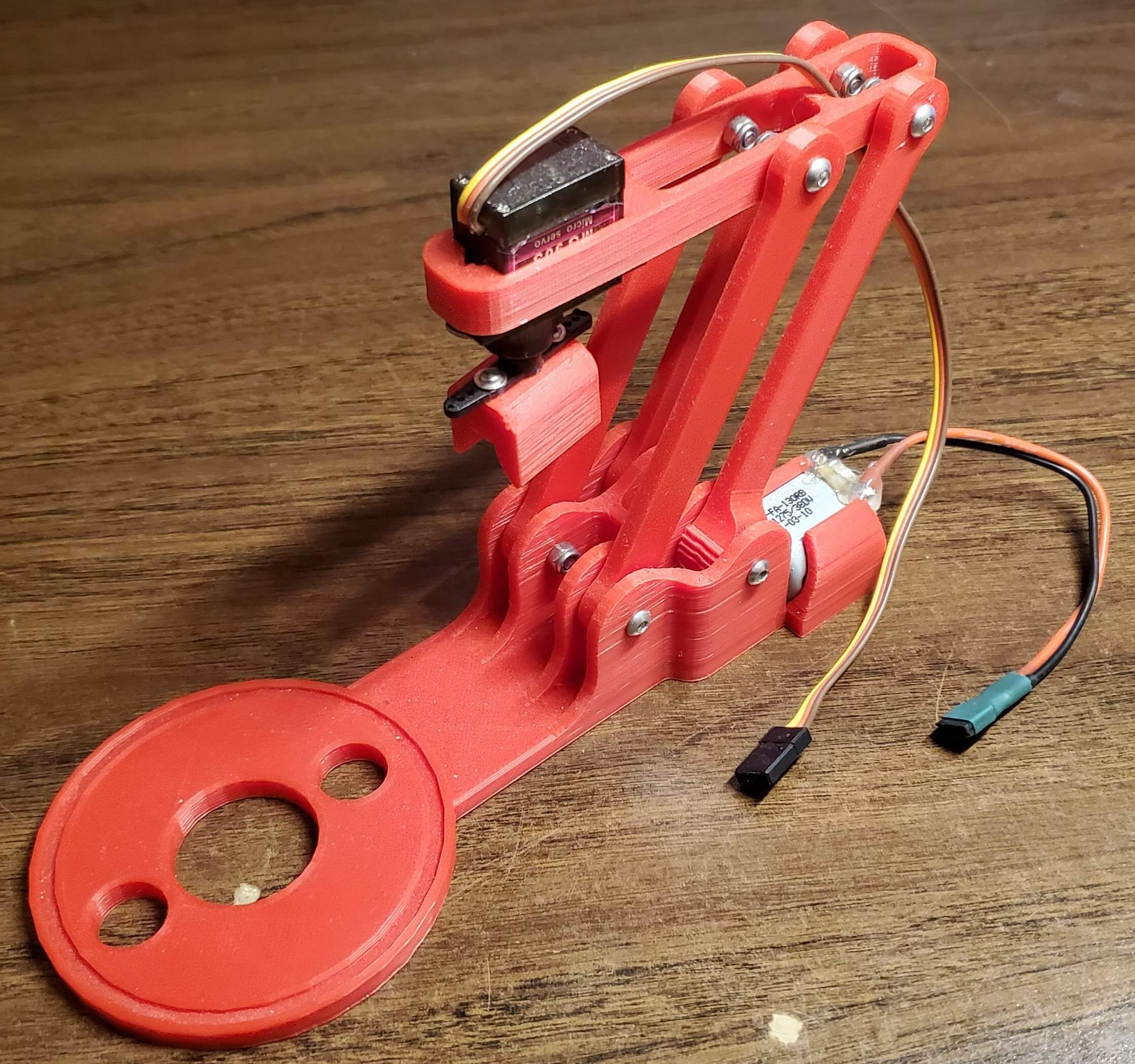A WIFI Controlled Door Lock
This device is still under construction, however the physical machine has been designed, built, and tested as working, so I thought I would include it here.
Many years ago, I wanted to design a machine to lock and unlock a door, using something other than a key. My initial design was to use a bolt lock, attached to a servo. When activated, the servo would rotate, moving the bolt into the locked/unlocked position (pictured at the bottom of this page). This could work if you have a place you can install the lock catch on, but it involves damaging the door frame which is not feasible in a rental situation.
Fast forward to today and I gave it another shot, to make a machine that doesn't require permanent alteration or removal of the handle. The only solution that meets these requirements is, objectively, quite "over engineered", but it does work. Modelled and animated entirely in Autodesk Inventor, the following machine was designed and then 3D printed in PLA. It utilizes a worm and worm gear to provide 30:1 torque along the arms, moving the upper carriage to position the servo. It then interfaces with the lock core, rotating it, enabling the ability to automatically lock/unlock the handle. It may only retract once the door is unlocked.
The remaining work that needs to be finished is the electronics, which consist of a stepper driver to supply power to the electronics and drive the DC motor (through I2C to PWM), as well as a custom-made Arduino, utilizing the ATmega328P once again. It will also include an ESP8266 WIFI module to connect to the internet, to which either a custom phone app or locally hosted site (not accessible outside of the local network for security reasons) will be made to send commands wirelessly. This will all be soldered to copper-dot perfboard before being boxed up and the device is installed.
Below is a picture of the final 3D printed mechanism with motors installed.

The following is a complete rendering of the device from Inventor.

An animation of the actual function of the device can be observed below.
An internal side view of the worm and worm gear turning to produce linear movement from rotational power.
Below is the old initial design from many years ago.
Works quite well and is much simpler, but cannot be installed in a rental situation.
